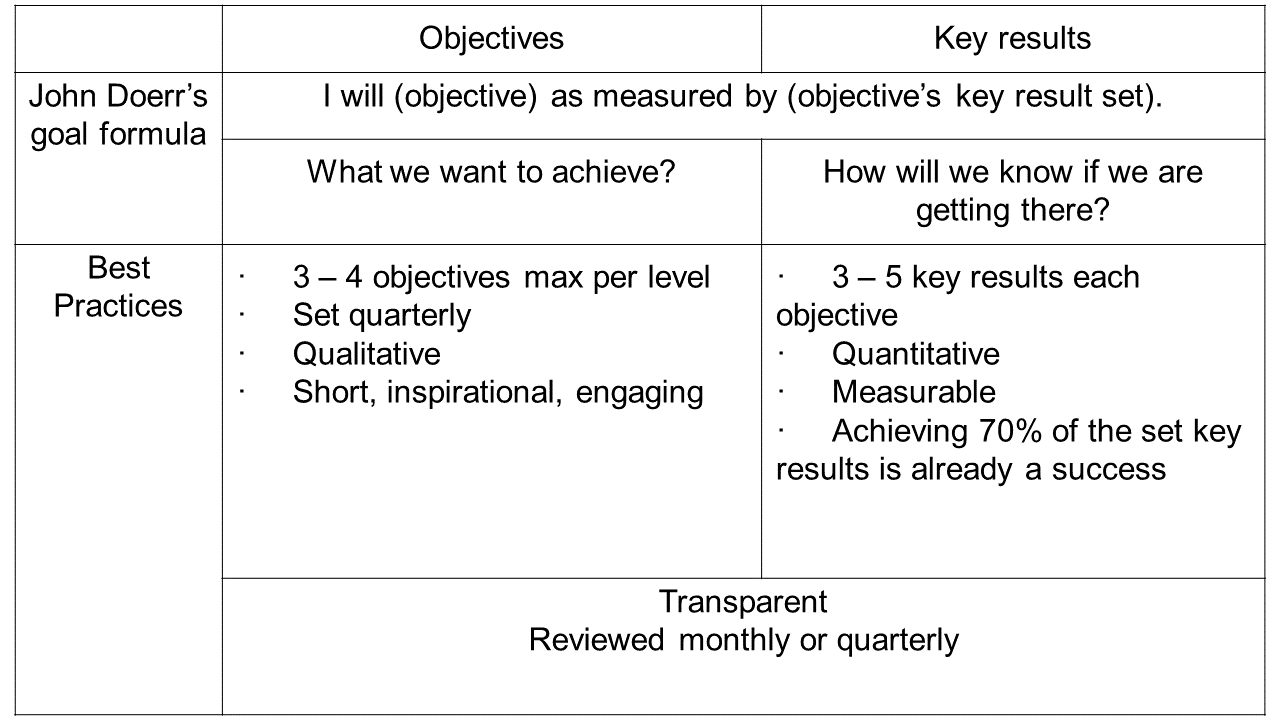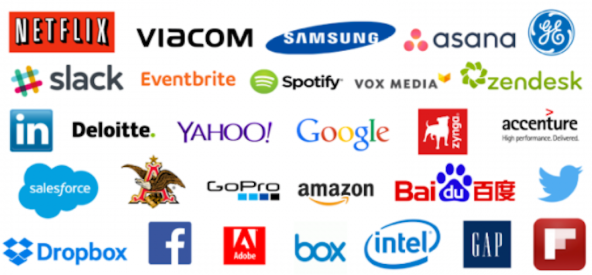FUNDAMENTAL OKR KNOWLEDGE FOR BEGINNERS
OKR (Objectives and Key Results) framework was invented by Andy Grove (Intel Corporation), developed from S.M.A.R.T goals and MBO logic but more ambitious and aspirational. In 1999, John Doerr (Google’s Venture Capitalist) helped OKR to make a debut in Google, since then many other companies from small-scale business to world-wide enterprise apply OKR into their organization too.
1. What is Objectives and Key Results?
OKR is understood as a framework which helps companies achieve more success with defined goals and measurable key results. Different from KPI whose main function is to keep organization being stable, OKR’s mission is inspiring and pushing companies to get out of their boundary and reach their highest targets.
The 2 elements of OKR:

2. Why OKR?
As a chosen one (of Google, Yahoo, etc.), OKR has many benefits which every organization loves to adopt.
a. Agility
Not just technology but every other industry is changing and developing steadily, so it’s essential (especially for big and longtime established company) to build an organization which adopts the concept of agility. Coming as a solution, OKR gives you the ability to respond and adapt quickly with the current trend of business when its ways of approach are varied, such as top-down, bottom-up or even cross-function approach. Google is a classic example; they have to adjust their products every day and this needs a system to realize and follow the change in just a millisecond of time. And without a proper method of management (like OKR), if you apply agility in your organization, the structural silos will be broken since your staff and peers start to work on different goals and use many different ways of process.
b. Transparency
To make every information or announcement public in front of everyone in a company is a difficult mission while transparency is the foundation of employee engagement. Thus, the structure of OKR allows you to build an open workspace, everyone knows everything. You and your colleagues could reach others’ objectives or processes with just a few clicks. Some OKR tools also offer you to easily align and sync goals with other people’s, department’s and company’s ones.
Tip: You could try our OKR product here (it’s free at the moment).
c. Measurability
Driving a company without a goal is like shooting an arrow without a target, they’re all going nowhere. Nevertheless, if you set out a goal which cannot be measured and defined, the efforts and time you spend may have been terribly wasted the whole time.
OKR’s measurability helps organization to track, collect and analyze data and progresses and informs you whether the process is on track, at risk or everything is doing good.
d. Simplicity
At one glance, OKRs are able to tell you how the process is thanks to its quantitative key results, how much time left to finish it and if there should be any adjustment in the course of action. I guess you don’t want any obstacles and difficulties to appear in your job no longer.
e. Focus
With OKR, employees don’t need to list out their tasks every morning and work on a thousand of stuff at the same time. They have just one primary key result in the time bound that has been set. The method also keeps you away from other unimportant tasks which could drive your attention and concentration to the black hole of minor and unrelated works.
These are just some major benefits that using OKR will provide you. And here are 2 more detailed blogs showing advantages of applying OKR into your organization: 10 facts that OKR will help your team to achieve way more than you can imagine, 5 Benefits of OKR.
3. Which companies are using OKR?

Source: Weekdone
As I have mentioned, OKR works in many sizes of organization: startup, SME, enterprise, etc. Here are few companies using OKR:
Adobe’s Donna Morris (Executive Vice President, Customer and Employee Experience) - “It saved us approximately 80.000 hours” when they implemented Check-in system (based on Objectives and Key Results method) to communicate with their employees after 5 years.
Upserve (Swipely): “Having public goals forces different types of thinking around how people ask for help from others,” – said Angus Davis, Upserve’s CEO.
Regarding to Sears Holdings Company case, the average sales per hour increased by 8.5%, and it was a 5% increase in hourly sales when Sears Holdings started to apply OKR. Employees who used this framework just once were 3% more likely to move up a performance level.
LinkedIn’s Jeff Weiner: OKRs are “something you want to accomplish over a specific period of time that leans toward a stretch goal rather than a stated plan. It’s something where you want to create greater urgency, greater mindshare, etc. You are sending the signal to the rest of the organization that ‘this matters’.”.





